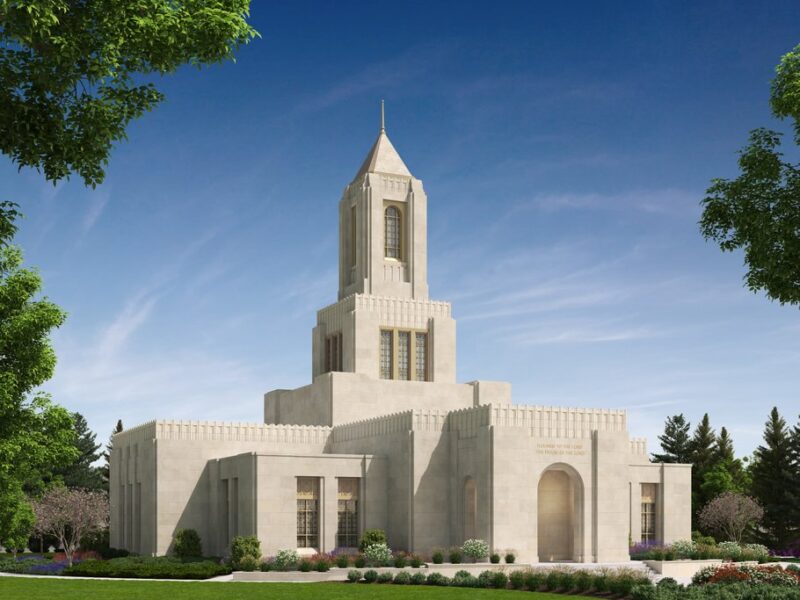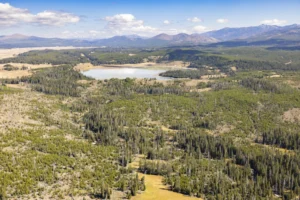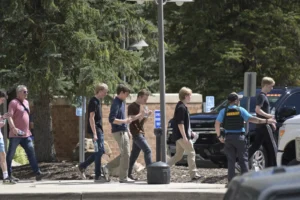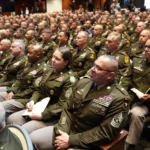Religion Gains Ground in Parts of Wyoming, Census Finds
Survey shows residents’ attitudes are moving in the opposite direction of those nationwide
- Published In: Other News & Features
- Last Updated: Jun 04, 2023

The Church of Jesus Christ of Latter-day Saints is constructing its second temple in Wyoming. The 10,000-square-foot temple, on 9.5 acres in Casper, is expected to be completed by the end of this year. (Photo credit Intellectual Reserve, Inc.)
By K.L. McQuaid
Special to the Wyoming Truth
Bucking a declining trend that is prevalent throughout much of the nation, religious beliefs and practices have gained traction in Wyoming over the past decade, according to a recent comprehensive survey.
The U.S. Religion Census, which is conducted every 10 years, found in 2020 that religious affiliations and adherence grew by over 10% since 2010 in five of the state’s 23 counties, including in Teton, Big Horn, Washakie, Carbon and Crook counties.
The Association of Statisticians of American Religious Bodies, which conducts the census, also found that a majority of residents of several counties – Big Horn, Lincoln, Uinta and Washakie among them – describe themselves as religious adherents. In each county, at least 55% of residents said they practice some form of religion or would consider themselves religious.
By contrast, nationwide the census found that among the 212 religious bodies that participated in both the 2020 and 2010 tabulations, the number of adherents rose 6.5% and the number of congregations increased by 2.2%. During the decade, the overall U.S. population grew by 7.4%.
In all, the census found 161.3 million religious adherents in the U.S., which represented 48.6% of the country’s overall population in 2020.
Earlier data from the Pew Research Center appears to back up the latest religious census findings.
Pew found that 71% of Wyomingites identify as Christian, with Evangelical and “Mainline” Protestants comprising a combined 43% of that total, according to its “Religious Landscape Study” completed in 2014.
Of 316 residents surveyed, 83% said they either “absolutely” believed or were “fairly certain” about the existence of God, according to the Pew research. By contrast, just 10% of those polled said they did not believe in God or “didn’t know” how they felt.
Along the same lines, 77% said that religion was either “very” or “somewhat” important to them, while 72% indicated they prayed either daily or on a weekly basis. A similar percentage told Pew researchers they believe in Heaven.
Sixty-six percent of respondents said they attended a church or other service either weekly or once or twice per month.
The census and Pew data for Wyoming stands in sharp contrast to trendlines for the nation, which show that the numbers of those expressing “no religious affiliation” are growing rapidly – especially among younger people.
In 2000, for instance, 8% of Americans said they did not identify with any religion, according to a Gallop Poll. Since 2020, that figure has risen to 21%.
By comparison, Pew’s data shows that 26% of its 316 respondents identified as either unaffiliated with any religious practice or as a religious “none.”
Young people nationwide make up a large percentage of the “no religious affiliation” subgroup.
About 31% of Millennials born between 1981 and 1996 told Gallup they are unaffiliated, while one-third of adult Generation Z Americans, born between 1997 and 2012, expressed a similar attitude.
“The secularizing shifts evident in American society so far in the 21st Century show no signs of slowing,” Pew researchers concluded.
Likewise, Gallup discovered that 47% of Americans in 2020 said they belonged to a church, synagogue or mosque – the lowest percentage in eight decades. In 1999, by contrast, 70% of Americans stated they belonged to some religious group.
At the same time, the U.S. Religious Census identified a burgeoning shift toward independent, nondenominational churches nationwide. Such houses of worship added about nine million members between 2010 and 2020.
“The decrease in certain denominations and increase in nondenominational churches may be a result of the same factors,” Scott Thumma, who counted independent churches for the census, said in a statement.
“Denominational brands have weakened and divisions have increased over issues such as female clergy or sexual orientation,” Thumma added. “This likely led some adherents to seek or even start new, nondenominational churches.”
In Wyoming, meanwhile, some denominational churches such as the Church of Jesus Christ of Latter-day Saints, have continued to grow and add members.
The church is currently constructing a new 10,000-square-foot temple in Casper. When completed later this year, it will become Wyoming’s second Mormon house of worship.
The Star Valley Wyoming Temple, located in Afton on the state’s western border with Idaho, opened in 2016.













